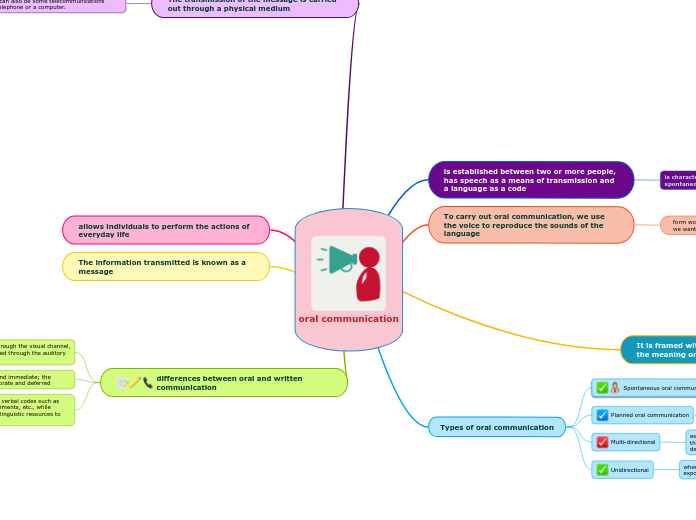
oral communication
is established between two or more people, has speech as a means of transmission and a language as a code
is characterized by being spontaneous
To carry out oral communication, we use the voice to reproduce the sounds of the language
form words and create messages that contain the information we want to convey to our interlocutor.
It is framed within a context that can affect the meaning or meaning of the message
the place, the situation and the circumstance in which it is delivered will determine the way in which it is received and interpreted.
Types of oral communication
Spontaneous oral communication
It does not attend to a previously established plan, theme or structure, but rather takes place in the form of a dialogue between two or more people.
Planned oral communication
It obeys a previously drawn up plan, with guidelines, themes or structures designed in advance.
Multi-directional
establishes the intervention of several interlocutors who offer their different opinions and approaches on a previously defined topic or issue
Unidirectional
when it involves only one issuer who addresses an audience to expose an issue or issue extensively.
The transmission of the message is carried out through a physical medium
it can be air, but it can also be some telecommunications device, such as a telephone or a computer.
allows individuals to perform the actions of everyday life
The information transmitted is known as a message
differences between oral and written communication
Written communication takes place through the visual channel, while oral communication is transmitted through the auditory canal.
Oral communication is spontaneous and immediate; the writing is characterized by being elaborate and deferred
Verbal communication relies on many verbal codes such as voice intonation, gestures, body movements, etc., while written communication must develop linguistic resources to convey meaning.
